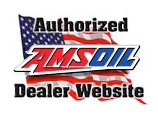01 Oct Manual Transmissions
Few connect driver and vehicle like a smooth shifting manual transmission. Though not as prevalent in the U.S. as they once were, manual transmissions still dominate classic car circles and often represent the first choice of enthusiasts.
Due to their relative simplicity compared to automatics, motorists may erroneously think manual transmission lubrication needs are  simple, too. That’s not the case.
simple, too. That’s not the case.
Manuals require fluids that…
• Enable smooth shifts
• Help control gear wear
• Reduce heat for improved gear efficiency
• Inhibit corrosion to gear surfaces
How They Work
In addition, most modern transmissions are equipped with synchronizers to enable smooth shifts. As the name suggests, the synchromesh unit – often referred to as the synchro, synchronizer or synchromesh gear – equalizes its speed with that of the gear being engaged, allowing a smooth shift. Without it, the gears spinning at different speeds would clash as they try to mate.
The synchronizer unit is comprised of two main components: the sleeve and the blocker or synchronizer ring. When the driver  selects, for example, first gear, the sleeve moves to the first gear and locks onto the gear engagement teeth, also known as dogs. Engaging the clutch and selecting second gear results in the sleeve moving the other way and selecting second gear in the same fashion.
selects, for example, first gear, the sleeve moves to the first gear and locks onto the gear engagement teeth, also known as dogs. Engaging the clutch and selecting second gear results in the sleeve moving the other way and selecting second gear in the same fashion.
Before the sleeve can lock onto the gear, the rotational speed of each must first be synchronized. The friction between the blocker ring and a cone on the face of the gear equalizes their speed, allowing gears to mate without clashing. The entire process happens quickly and goes unnoticed in correctly operating transmissions.
Lubricant Requirements
Most drivers desire transmission lubricants that deliver smooth, confident shifts. Lubricant viscosity that is too high could prevent shifting until the transmission warms up or result in abnormally high temperatures during operation. Viscosity that is too low could cause the synchronizer and dog gear to engage too quickly, resulting in grinding or hard shifts and abnormal transmission wear. The wrong frictional properties result in poor shift quality and, possibly, accelerated synchronizer wear.
Some drivers also assume they must use a fluid labeled for synchromesh transmissions, such as AMSOIL Manual Synchromesh Transmission Fluid (MTF), if their transmission is equipped with synchros. However, AMSOIL Manual Transmission & Transaxle Gear Lube (MTG) or even an AMSOIL synthetic automatic transmission fluid may be the primary recommendation, depending on the viscosity and/or frictional requirements of their transmission.
Did You Know Manual transmissions may call for an automatic transmission fluid, a 75W-90 gear lube, a fluid formulated for synchromesh units-even a motor oil in some older units. Maximizing transmission performance and life requires using the correct fluid.
No matter which fluid is recommended, AMSOIL formulates a lubricant optimized for superior manual transmission performance.

